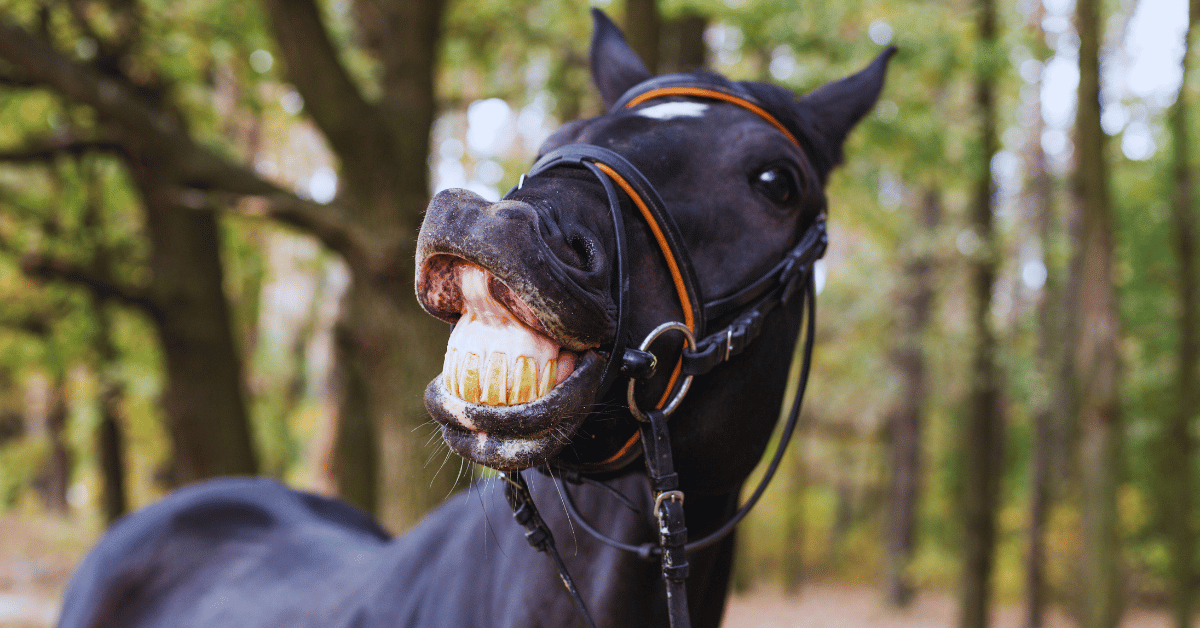Horses are known for their grace and power, but can they also express joy in ways we might recognize, like laughing? The question, do horses laugh, might seem whimsical, but it taps into the fascinating realm of equine emotions and body language.
While horses don’t laugh like humans, their playful actions, quirky expressions, and specific vocalizations reveal happiness in unique ways. From the comical “flehmen response” (where a horse curls its lips) to energetic gallops around the pasture, horses have their own delightful ways of showing they’re content.
Misinterpreting these behaviors can lead to missed opportunities to deepen your bond or, worse, misjudge their well-being. By understanding the signs of a truly happy horse—such as relaxed ears, soft eyes, and friendly nuzzles—you can create an environment that nurtures their emotional health. Let’s explore what makes your horse feel joy and how to recognize their silent laughter!
Horses’ Emotional Recognition Abilities
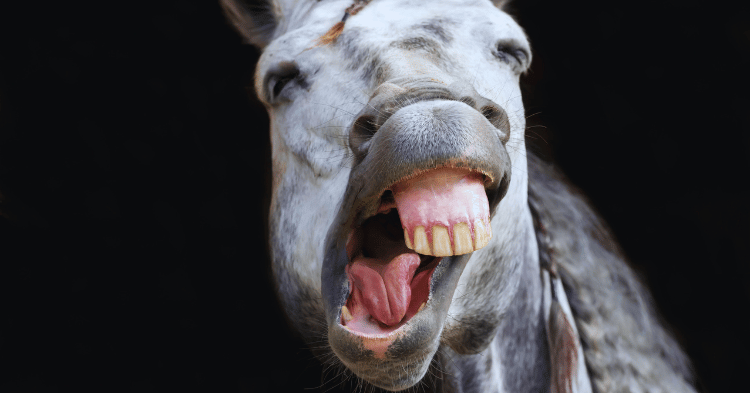
Understanding the emotional recognition abilities of horses sheds light on their behavioral responses and interactions with humans. This knowledge is valuable for enhancing horse welfare and the human-horse bond. In this section, we will examine horses’ abilities in cross-modal emotion recognition and the impact of human emotions on horses.
Cross-Modal Emotion Recognition
Horses possess the remarkable ability to recognize human emotions across different modalities. They can simultaneously process visual and auditory emotional cues, demonstrating an intricate understanding of human expressions.
Research has shown that horses can identify human facial expressions and match them with corresponding vocalizations. In a study, horses were presented with animated images of human faces showing joy and anger, alongside non-verbal vocalizations expressing the same emotions. The horses looked longer at images that were incongruent with the vocalizations, indicating they could match the visual and vocal cues to identify the emotion being conveyed (NCBI).
| Emotion | Facial Recognition | Vocal Cues | Response |
|---|---|---|---|
| Joy | Animated smile | Happy vocalization | Positive behavior |
| Anger | Animated frown | Angry vocalization | Negative behavior |
This ability to cross-modally recognize emotions suggests that horses have a complex emotional intelligence. Such an understanding can significantly improve horse-human interactions, as humans can be more mindful of their emotional expressions around horses.
Impact of Human Emotions on Horses
Horses not only recognize human emotions but also react to them behaviorally and physiologically. The emotional state of a human can influence a horse’s level of stress or relaxation, impacting their overall well-being.
When exposed to human vocalizations, horses display different reactions based on the valence of the emotion. For instance, they adopt vigilant postures and exhibit higher heart rates when hearing angry vocalizations. Conversely, they show relaxed postures and lower heart rates in response to joyful vocalizations.
| Vocalization | Posture | Heart Rate | Emotional Response |
|---|---|---|---|
| Angry | Vigilant | Higher | Negative |
| Joyful | Relaxed | Lower | Positive |
The implications of these findings are significant for horse management and safety. Understanding that horses respond to human emotions allows handlers to approach horses with positive expressions, thereby reducing stress and potential risks (NCBI).
For more insight into how horses interact with humans and their emotional responses, explore topics such as do horses like humans and do horse know their names.
Communication with Horses
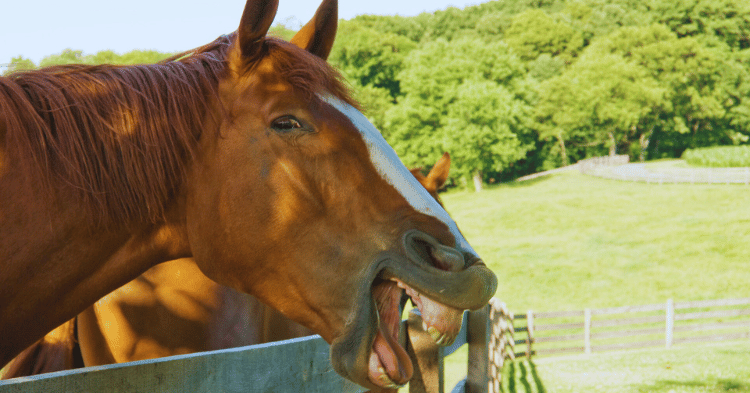
Understanding how horses communicate is essential for building a strong bond with them. Horses rely on various cues, vocalizations, and olfactory signals to interact with humans and other animals.
Understanding Equine Cues
Horses use a combination of body language, facial expressions, and tactile responses to convey their emotions. Recognizing these cues is vital for correctly interpreting a horse’s mood and intent.
- Body Language: Horses communicate through their posture, the positioning of their ears, and tail movements. For example, pinned ears often indicate aggression, while a relaxed posture may signify contentment.
- Facial Expressions: Horses exhibit a range of facial expressions, such as flared nostrils or widened eyes, which can indicate fear or excitement (NCBI).
- Tactile Responses: Horses respond to touch in various ways, such as nudging or pawing, that can offer insights into their feelings.
Engaging with your horse and observing these cues can help you better understand their emotional state. For more insights on equine behaviors, explore our article on do horses like humans.
Vocal and Olfactory Communication
Beyond body language and expressions, horses also rely on vocal and olfactory communication.
Vocal Communication
Horses use different vocalizations to communicate with humans and other horses:
- Whinnying and Neighing: Often used to express excitement or seek attention.
- Nicking: A gentle sound used to convey greeting or anticipation, especially during feeding.
- Snorting: Indicates alertness or a state of being startled.
Horses can also interpret human vocal tones and react accordingly. A calm and soothing tone can help a horse feel at ease, while a harsh tone may cause distress.
Olfactory Communication
Equine olfactory capabilities are highly developed, and horses use their sense of smell to understand their surroundings and the emotions of those around them:
- Smelling Humans: Horses can detect human emotions through scent, influencing their interaction with people.
- Scent Marking: Horses use scents to mark their territory and recognize members of their herd.
Understanding these sensory cues can aid in creating a positive interaction with your horse, especially when paired with the right equine cues. For more detailed knowledge on horse behavior, delve into our resources on do horses get fleas and do horses know when they are going to die.
By appreciating and responding to these communication methods, you can enhance the relationship with your horse, fostering trust and mutual understanding.
Social Bonding and Affection
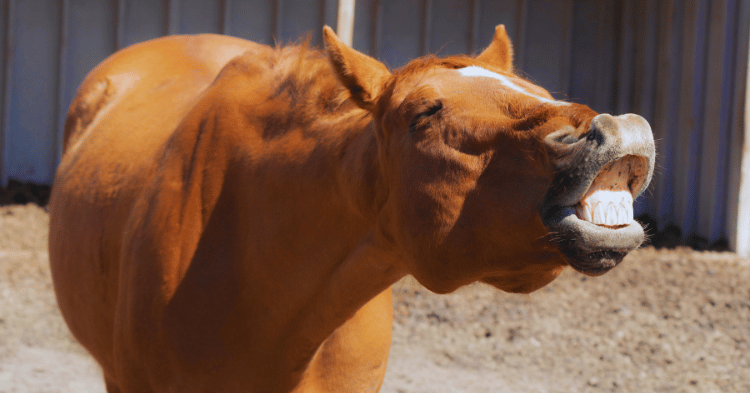
Understanding how horses show affection and bond with humans can greatly enhance the relationship between a horse and its owner. Horses are social creatures that thrive on emotional connections and mutual trust.
Affectionate Behaviors of Horses
Horses exhibit a range of affectionate behaviors that signal their comfort and trust with humans and other horses. Recognizing these behaviors can help owners strengthen their bond with their equine friends.
- Greeting Nickers: A friendly, low-pitched nicker when a horse sees a familiar human or horse is a sign of recognition and affection.
- Head Lowering: When a horse lowers its head and invites a rub or scratch, it shows trust and seeks physical affection.
- Relaxation: Horses that are relaxed around certain humans are expressing comfort and safety.
- Respecting Space: A respectful distance without crowding or pushing indicates a horse’s recognition of a human’s personal space and leadership.
Building Trust and Mutual Affection
Building a strong, affectionate bond with horses requires understanding, patience, and mutual respect. Here are essential strategies:
- Consistent Routine: Establishing a consistent care and training routine builds familiarity and trust.
- Gentle Handling: Gentle, calm, and respectful interactions encourage horses to reciprocate with trust and affection.
- Positive Reinforcement: Using treats, praise, and gentle petting as rewards helps reinforce desired behaviors.
- Respect Boundaries: Horses respond positively to those who respect their physical space and avoid loud or pushy behavior.
- Quality Time: Spending quality, undemanding time with a horse, such as grooming or grazing together, can enhance the bond.
Horses are highly perceptive animals that can gauge the emotional states of their human companions. Recognizing and responding to equine cues contributes to a deeper, more trusting relationship. With the right care and communication, these gentle giants can become affectionate and loyal partners.
Learn more about how to maintain a healthy relationship with your horse by visiting our articles on can horses eat bananas and can horse sleep standing up.
| Affectionate Behaviors | Description |
|---|---|
| Greeting Nicker | Low-pitched sound when greeting familiar beings |
| Head Lowering | Inviting rubs or scratches indicating trust |
| Relaxation | Showing comfort around specific humans |
| Respecting Space | Recognizing personal space and leadership |
Understanding and nurturing these behaviors can greatly enhance the mutual affection between horses and their owners. Explore more about equine emotions and their responses in related articles like do horses know their names and do horses lay down.
Humor in Horses and Animals
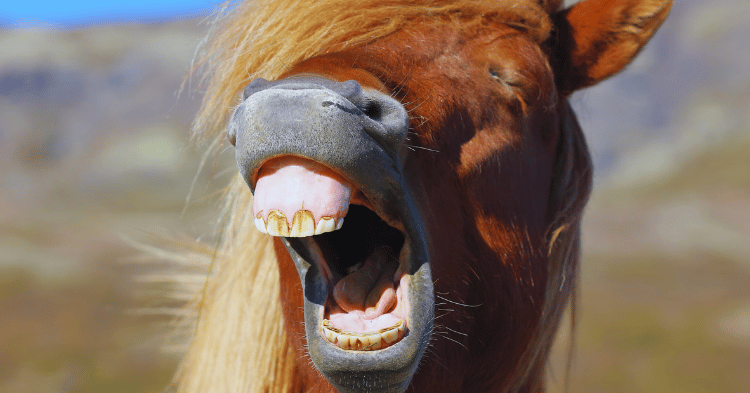
Playful Behaviors in Horses
While the question “do horses laugh?” may not have a straightforward answer, horses do exhibit playful behaviors that suggest a sense of humor. Horses often engage in activities that seem designed to provoke a reaction. For instance, they have been observed grabbing objects and dropping them in specific locations, appearing to enjoy the resulting interaction with humans.
| Behavior | Description |
|---|---|
| Carrying Objects | Horses may pick up and carry objects, dropping them to get a reaction. |
| Grabbing Items | They might snatch items like hats or bags, appearing playful. |
| Interaction Games | Horses sometimes play games that include elements of teasing. |
These behaviors reflect a playful character and might be interpreted by owners as a form of humor. For more on understanding horse behaviors, visit our article on can horses cry.
Comparing Humor Across Animal Species
The concept of humor in animals varies, but many species show playful behaviors similar to those seen in horses. For example, dogs are known for their humorous antics. One Labrador named Desmond displayed a playful streak by stealing a slipper each evening, waiting for his owner to retrieve it.
| Animal | Playful Behavior |
|---|---|
| Dogs | Stealing objects, waiting for owners to retrieve them. |
| Cats | Batting at objects, hiding toys, and pouncing on feet. |
| Parrots | Mimicking sounds, playing hide-and-seek with objects. |
Interestingly, different species, including domestic horses and Przewalski’s horses, have been observed reacting more strongly to negative vocalizations than to positive ones. This behavior shows that animals can discriminate between positive and negative stimuli, suggesting a complex understanding of their environment.
For additional information on how animals perceive and interact with their surroundings, check out our resources on do horses sleep standing up and can horses eat grapes.
By understanding these behaviors, horse owners can better appreciate the playful and intelligent nature of their animals. For more insights into horse behavior and care, explore our articles on can horses sweat and do horses drink milk.

